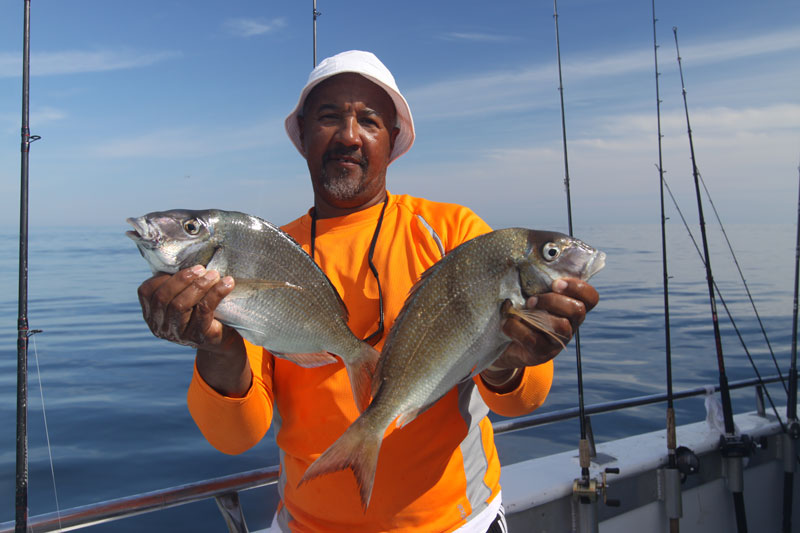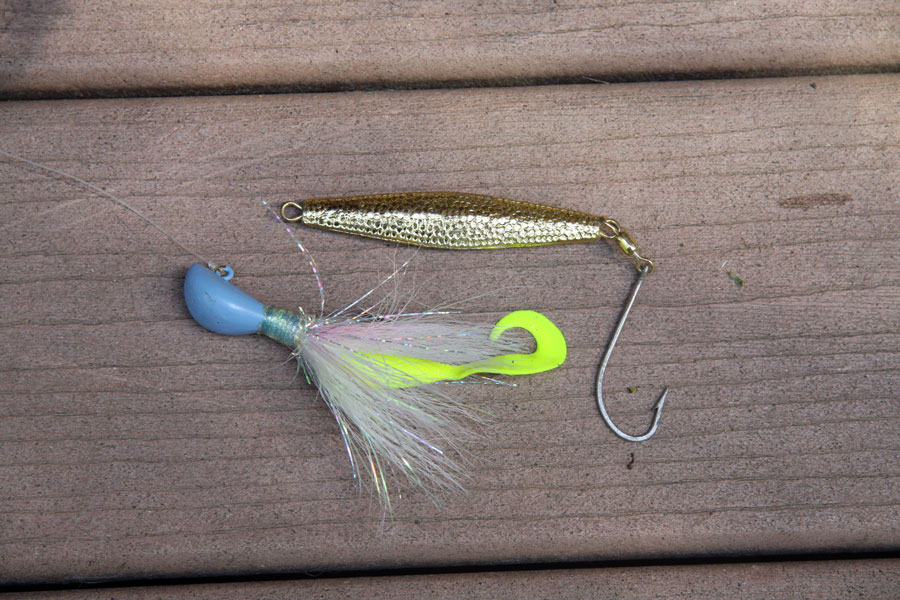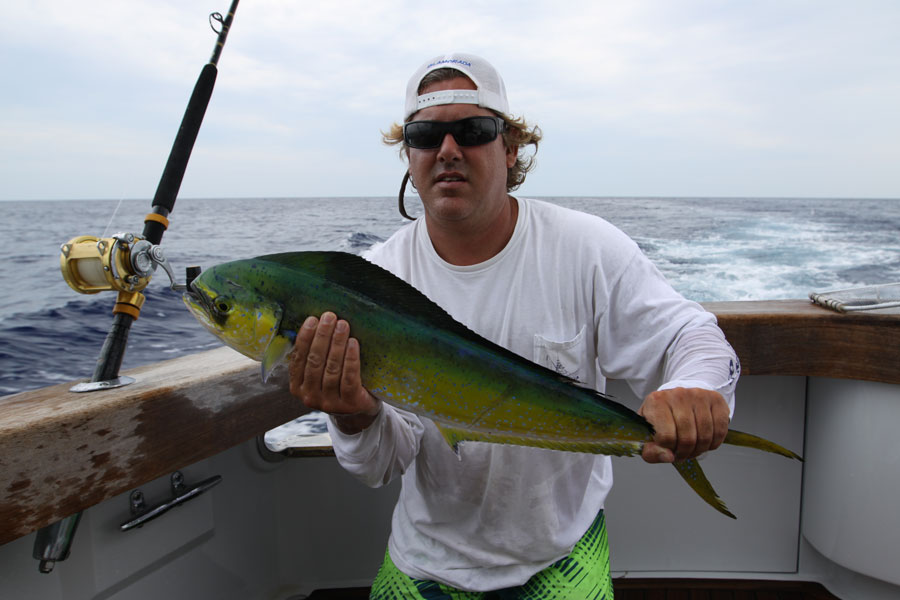By Tom Schlichter

Four hours without a strike is too long, even when the water is that beautiful, warm -blue color you just know has to hold some tuna.
We had been trolling along the 30-fathom curve, working an eddy that had spun off from the Gulf Stream and meandered slowly toward the inshore grounds. Unfortunately, by the time we arrived on the scene, most of the warm was gone and so, too, it appeared were the tuna we hoped to encounter.
With an hour to go before lines up, we had trolled every quadrant of the pocket and come up empty. It was then one crew member piqued everyone’s interest by recalling a small weed line we had passed an hour earlier. Perhaps there would be a few mahi (dolphin fish) hiding in the shade of the floating mats allowing us to at least catch dinner. In a last-ditch effort to salvage our day, we reeled up and came about.

Arriving alongside the long, snaking weed line, it took only one cast of a white bucktail before the words “Fish on!” rang out from the port stern. Indeed, there were mahi under the weeds – plenty of them. We drilled over a dozen in the next forty minutes and salvaged our day with explosive action and leaping fish on light spinning gear. What a blast!
Nobody likes to get skunked on a fishing trip, but it’s part of the game. There are, however, a few things you can do to tilt the odds in your favor whenever you head out. Clearly, one of these is to prepare for battle with multiple species of fish anytime you take to the water with piscatorial pursuit in mind.
On this trip, for example, our cockpit and cabin was stuffed full of tuna gear of every type. We had along with us huge reels of every configuration, chunk bait, chum, dozens of tuna lures in a rainbow of colors and hundreds of hooks. In short, we had every conceivable tuna option covered. Fortunately, we also had four 14-pound test spinning outfits plus a Plano box full of small hooks and jigs that were just the right size for mahi.
That we came home without any tuna was unavoidable given the day’s bite. That we managed to bring back a huge pile of mahi fillets, however, was due to good preparation and a willingness to alter our game plan when push came to shove.
With many popular game and food fish species currently over-stressed, and others covered by strict creel and size limits, targeting two or more different kinds of fish makes a lot of sense. It provides an option if your primary quarry fails to show, isn’t large enough to keep, has lockjaw – or is so willing that you fill your limit in record time. It’s also smart from an environmental perspective, spreading the pressure between species instead of hammering the same type and body of fish day after day after day.
Like most anglers, I usually head out with one primary target in mind, but I also prepare a back-up plan in case all doesn’t go as initially hoped. Such planning has saved the day for me on many occasions, supplemented decent days to make them good ones, and turned some banner days into fantastic voyages.

Photo by Tom Schlichter.
Imagine, for instance, limiting out with fluke to six pounds, then topping off your catch with a pair of 40-pound striped bass; decking your largest yellowfin tuna and then hauling up an old soaker of a codfish later the same day; catching a nine-pound weakfish and five-pound fluke – at the same time.
I’ve seen each of these scenes played out over the years and in each case the catches were by design, the product of good planning, smart rigging and thorough preparation.
Stripers and blues, porgies and sea bass, blackfish and cod: these are examples of “natural doubles;” fish that go together at certain times of the year like peanut butter and jelly, ham and cheese or bacon and eggs. With each of these pairs, if you find one species and there’s a good chance you’ll find the other as they favor similar habitat and water temperatures. Often you’ll catch them on the same baits and rigs, and in the same general places, so no real extra thought is required on this front. If you’ve been fishing for any length of time, you’ve undoubtedly witnessed such doubles occur countless times.
But with a little extra thought and preparation, you can take the double-up theme to a whole new level. Consider a mix of striped bass and summer flounder, for example. They aren’t natural doubles in the sense that you would expect to catch them together like porgies and sea bass. But they are frequently found in close proximity to each other. In many areas, you actually have to drive over the fluke grounds in route to the striper rips. Gearing up for both can be a great way to ensure a full day of action – or save a trip when one or the other fails to cooperate.

Simply being prepared to take advantage of predictable opportunities is another way to play the doubles game. Most fluke fishermen, for instance, leave port with one thought in mind: Catch fluke! Then they watch in dismay as the surface erupts with cocktail blues all around at mid-day as the summer flatties take a siesta. All it takes is a extra spinning outfit or two on board, rigged and ready to go with a popping plug or hammered spoon, and you can quickly take advantage of the blues while waiting for the fluke action to come back on track.
Being prepared to catch more than one kind of fish on every trip maximizes your time on the water by eliminating down time. It can make your day more interesting, and can even salvage trips when the targeted guest fails to cooperate.
Doubling up can also add your dockside fun. Imagine explain to skippers berthed nearby that you actually intended to take a mix of tuna and sea bass, mahi and fluke or codfish and scup. The smirky smiles and rolling eyes alone are enough to warrant keeping a few extra set-ups stowed on my vessel.
By Tom Schlichter









